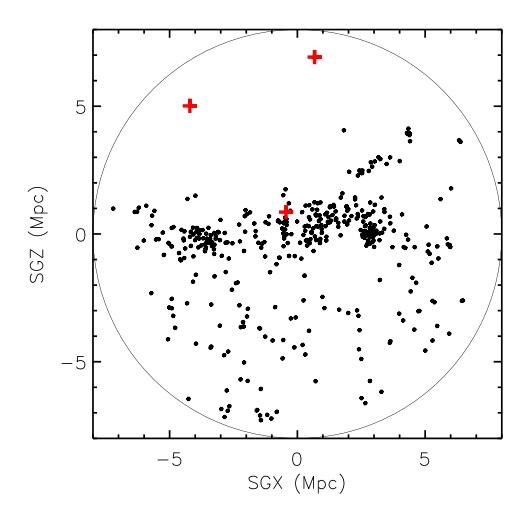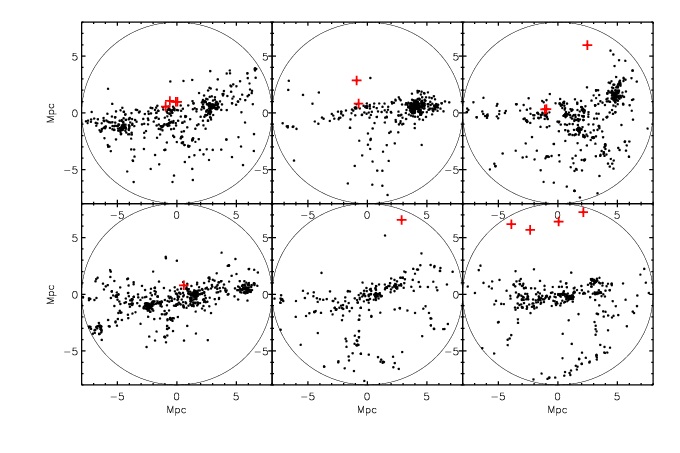PhD student at NAOC solves the Local Void problem in LCDM
Full sky galaxy surveys in the local Universe have revealed a very large region around the Local Group with extremely low galaxy number density, which is named the Local Void. Peebles & Nusser (2010, nature) claimed that the emptiness of the Local Void may be a big challenge to the theory of standard hierarchical structure formation. They compiled a galaxy catalog with 562 galaxies in the Local Volume (1<R<8 Mpc around the Milky Way) and found only three of them are located in the Local Void. Using HOD and the distribution of dark matter halos, they argued that 19 galaxies should have been found in the Local Void, which is more than six times higher than the real number.
Lizhi Xie, Liang Gao and Qi Guo from the Computational Cosmology Group at National Astronomical Observatories of China solved the Local Void problem with numerical simulation. They used a high resolution cosmological N-body simulation (the Millennium-II Simulation) combined with a sophisticated semi-analytic galaxy formation model to statistically explore whether the Local Void is allowed within current knowledge of galaxy formation in LCDM. Among 77 systems that are analogous to the local volume, 11 of them are associated with empty regions. The local voids in the simulation have similar size, 'emptiness' and appearance (shown in the figure below) as the observed Local Void. The paucity of faint galaxies in such voids results from a combination of two factors: a lower amplitude of the halo mass function in the voids than in the field, and a lower efficiency of galaxy formation in the void halos due to bias effects in halo assembly.
This result suggests that, rather than a crisis in LCDM, the emptiness of the Local Void is a success of the standard cosmology theory.


The two figures show projected images of the local volumes. The upper one is the observational result. The lower one is the simulated result. Each dot represents a galaxy, and the red crosses are galaxies physically in voids.